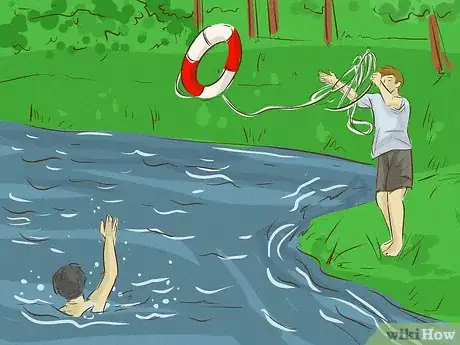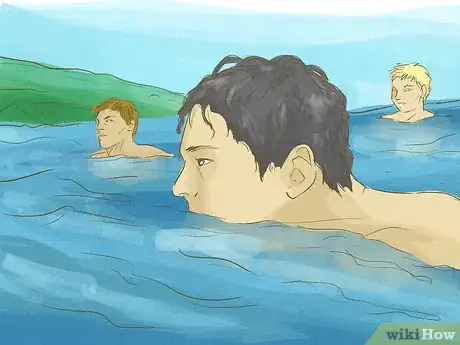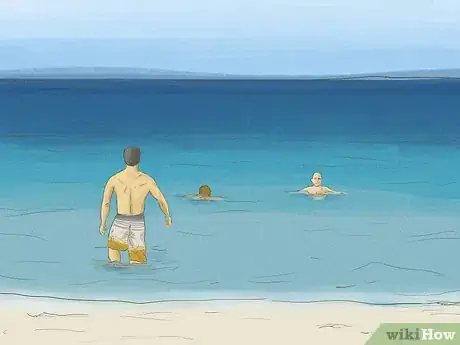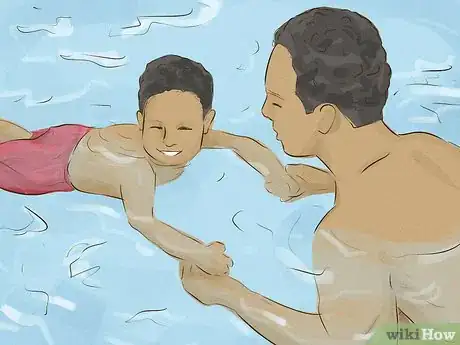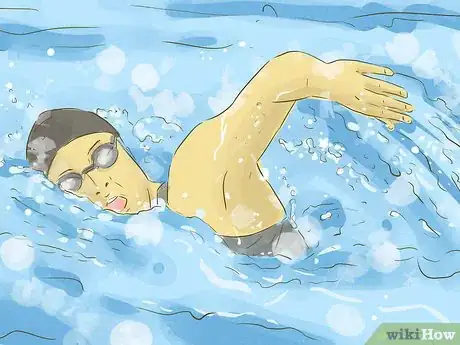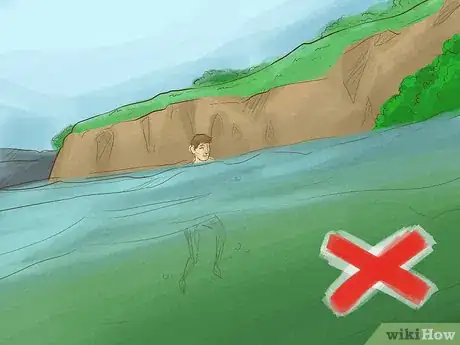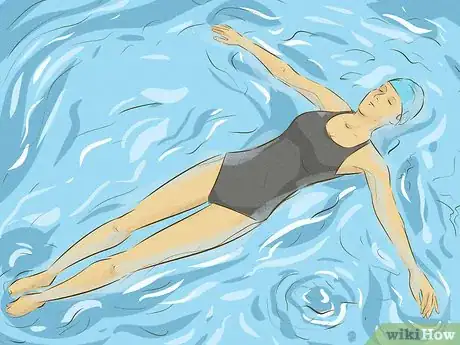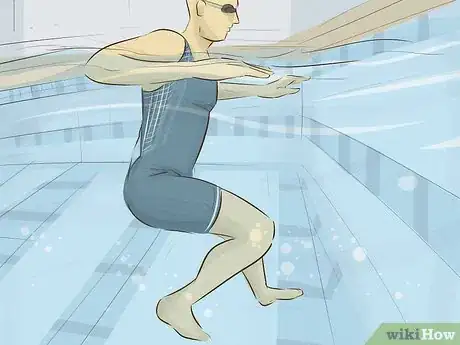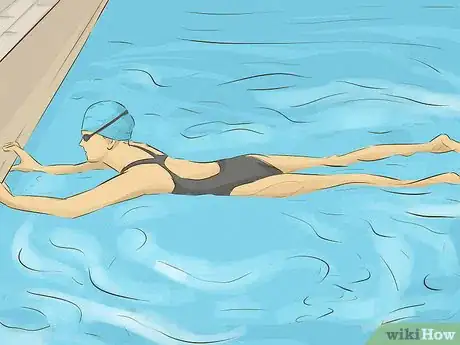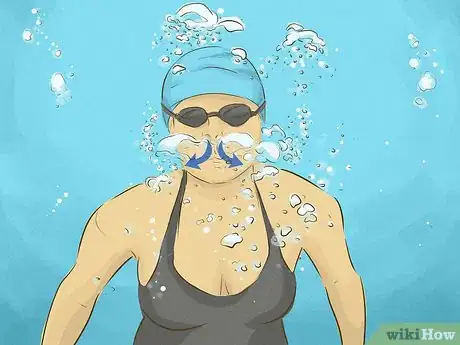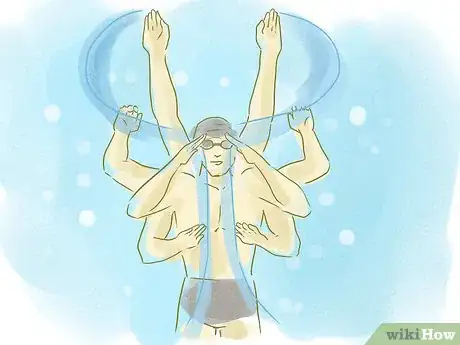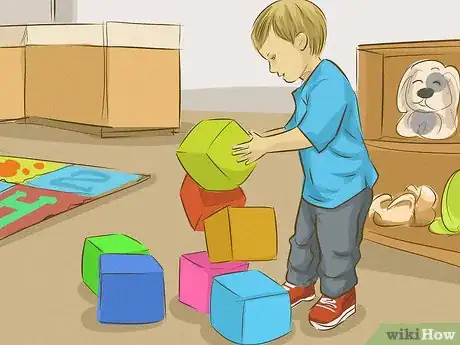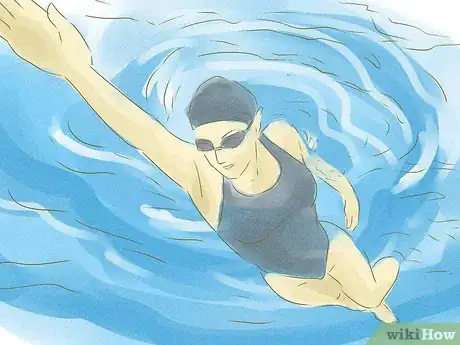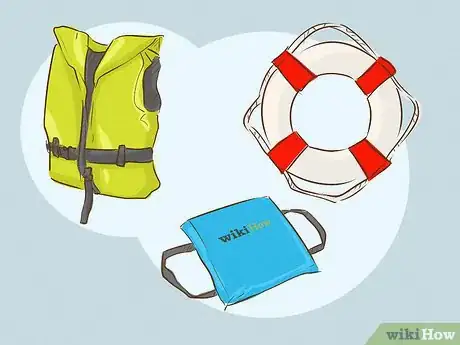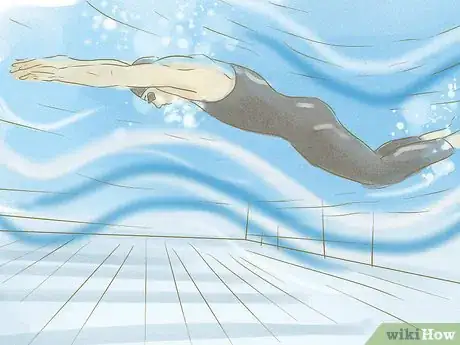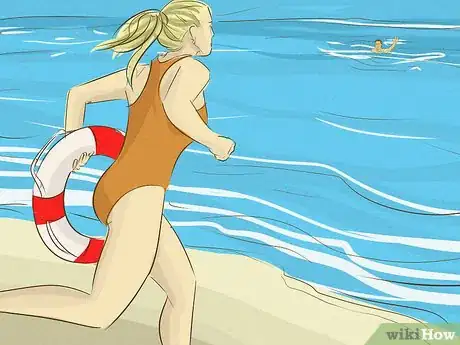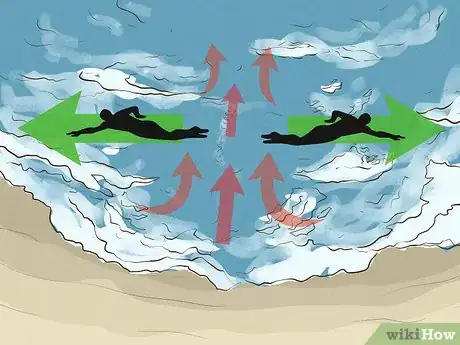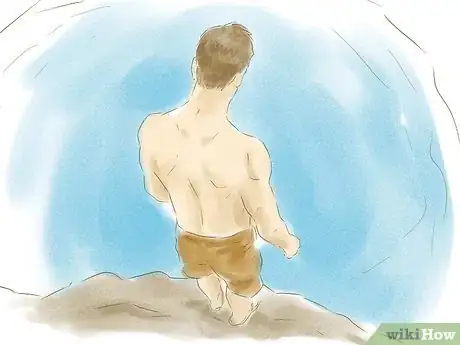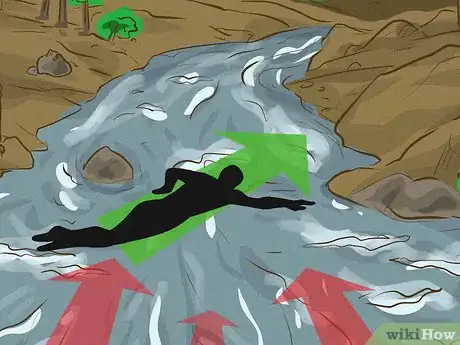This article was co-authored by Brad Hurvitz. Brad Hurvitz is a Certified Swimming Instructor for My Baby Swims, an adolescent swimming school based in La Jolla, California. Brad is trained as an Infant Swimming Resource (ISR) instructor with ISR's Self-Rescue® program. He specializes in training children aged six months to six years of age survival skills like floating on their back to breathe and swimming back to the wall, while also educating parents on how to better keep their kids safe. He has a Master of Business Administration from Oregon State University.
There are 7 references cited in this article, which can be found at the bottom of the page.
This article has been viewed 149,124 times.
Roughly ten Americans die each day of unintentional drowning, making aquatic accidents the fifth most common cause of accidental death in America.[1] Only two out of ten accidental deaths occur among children under 14. It is important to know what to do if you fall into the water and cannot swim, these directions will help you stay afloat until help arrives.
Steps
Being Cautious Around Water
-
1Don't fall in! Any body of water can have hazards associated with it, and it is important to keep track of your surroundings. If you do accidentally enter an aquatic environment keep these things in mind.
- Stay calm. Suddenly falling into water will be a bit jarring, make sure you stay calm. Panicking will work against you restoring yourself to dry land.
- Ask for assistance. Have someone throw you a float, a rope, or any assistive device available.
- Tread water until you make it to the edge of the pool. (If you are not sure how to tread water try the instructions below.) When you reach the edge pull yourself out, or ask for assistance. If you fell into a lake or river tread water until you can stand in the shallows. Barring that, have someone throw you a float, and then assist you in recovering your position on the dock or boat.
-
2Swim with friends. One of the best ways to avoid getting into trouble is to swim with other people. This applies to all environments, either at home or in natural bodies of water. Swimming with companions allows for a much faster response rate if anyone gets into trouble.Advertisement
-
3Remain aware of your surroundings. Be sure to keep track of everyone you are swimming with. If someone disappears they may need assistance; you should be ready to help as effectively as possible.
-
4Provide adult supervision to any children when around water. Children can easily get into a situation they cannot get out of, so be sure to keep close watch over children when near water.[2]
-
5Be aware of your abilities, and the abilities of those you are swimming with. Make sure that weak swimmers are provided with flotation devices. It is also important to know if any of your companions have a seizure disorder. A seizure while in the water can be very dangerous, and greatly increase the possibility of drowning.
-
6Avoid consumption of alcohol. Be sure that anyone swimming is sober as the consumption of alcohol is a major risk factor in drownings. If you plan on consuming alcohol near a body of water take precautions to ensure safety such as wearing a life jacket or other appropriate flotation devices.
-
7Know the risk factors related to the environment you are swimming in. Never dive into unfamiliar water. Light refracting through water can distort the location or appearance of rocks or shallow areas which can be serious hazards while diving. Always check on local conditions, high running water, riptides, and cold temperatures can be hazardous to the strongest swimmers.[3]
Learning to Tread Water
-
1Keep your hands and arms in the water. Do not raise your hands and do not flail. Keeping your arms in the water displaces more liquid, and makes you more buoyant.
-
2Move your cupped hands through the water to push you toward the surface. Cupping your hands allows you to deliver more force in each stroke. Pushing downward with your cupped hands will move your shoulders and head above the surface of the water.
-
3Keeping your legs at a normal gait, and move them in a scissor motion. This pushes water underneath you, and will keep you on the surface. The closer your legs are together the more water they will displace, but you want to keep them just far enough to not knock into each other. Think about a typical walking motion, and that will provide a good gauge. Kicking will also prevent your arms from tiring.
- Ideally you will use your hands and arms together, but that will take some coordination and practice. You can alternate between the two while you get used to the motions. Alternating kicking and pushing with your arms will allow you to stay buoyant for a longer period.
-
4Breathe in easy regular breaths. Keeping air in your lungs will make you more buoyant and less likely to slip beneath the surface. Feeling like you could drown is a frightening experience, and can make you want to breath rapidly or hold your breath, but it is important to remain calm. Avoiding hyperventilation and loss of oxygen will help you get back out of the water.
-
5
Keeping Your Home Pool Safe
-
1Install barriers around your pool. This will prevent children from entering the water without supervision. Children are at an increased risk around home pools[5] , and it is important that they are not allowed easy or unsupervised access.
-
2Remove all toys from the pool area. Anything that might tempt a child to enter the water without supervision is dangerous. Toys can be especially alluring to kids, and need to be put away after use.
-
3Learn to swim. Most local branches of the Red Cross or YMCA will offer a variety of swimming lessons for all ages, and levels of ability. This can be a very important safeguard before installing or moving into a home with a pool. [6]
-
4Provide flotation devices for any inexperienced or weak swimmers. A bit of prevention is worth much more than a dramatic rescue. If you have young children, or are expecting young children to be using your pool provide age appropriate flotation devices.
-
5Maintain all drain covers on your pool. Improperly maintained covers can create suction that will hold a swimmer or child under the water.
Being Safe in Natural Bodies of Water
-
1Know your environment. Swimming in natural bodies of water can be fun, but present their own risks. Know what the greatest risks are for the area you are swimming in.
-
2Swim in front of a lifeguard. If it is available always swim with a lifeguard present. They are trained to look for danger and provide assistance.
-
3Watch out for riptides. If you are swimming in the ocean these can be very serious threats. Riptides form when part of the sandbar gives way and water rushes out into the ocean. If you are caught in a riptide swim parallel to the shore until you are out of the pull of the riptide, and then swim diagonally to shore.
-
4Enter fresh water lakes and rivers feet first. It will prevent head injuries due to unseen rocks or hazards. You should also test the water's temperature before entering. Even on a warm day a deep lake can be cold enough to induce hypothermia.
-
5Never swim in a high running current. Moving water has a remarkable ability to overwhelm even the strongest swimmer. If a river appears to be running quickly you need to be very cautious about entering as the current could easily present a hazard.
- If you find yourself in a fast moving current, float on your back with your feet pointing downstream, and your head pointing up stream. Your feet will absorb any impacts from unexpected obstacles. When the current slows down , swim diagonally to shore.[7]
Expert Advice
To protect your child around a pool:
- Secure the pool area. Put a fence around your pool with a gate that shuts and locks automatically. Consider putting an alarm on your pool gate that will alert you if your child opens it.
- Pay attention. Always supervise your child around a pool—don't turn your attention to your phone or other distractions.
- Act quickly if you don't see your child. If you have a pool at your home and you can't find your child, check the pool before you look anywhere else.
- Give your child swimming lessons with a professional instructor. Sign your child up for swim lessons to learn basic survival skills in the water.
- Learn CPR. It's obviously something you never want to utilize, but it's a necessity to know as a parent.
Warnings
- Do not panic, for this will make it worse and more easy to go under the water. People react to water in weird ways.⧼thumbs_response⧽
- Avoid kicking and splashing the water as violently as possible, this action will make sinking easier.⧼thumbs_response⧽
- If the victim/casualty has inhaled water, transport them to the nearest hospital as quickly as possible.⧼thumbs_response⧽
References
- ↑ http://www.cdc.gov/HomeandRecreationalSafety/Water-Safety/waterinjuries-factsheet.html
- ↑ http://www.aquaticisf.org/prevention.htm
- ↑ http://www.nbcwashington.com/news/local/Drowning-Swimming-Drown-Water-Pool-Beach-15-Things-You-Need-to-Know-This-Summer-about-the-Fifth-Leading-Cause-of-Death--263491391.html
- ↑ http://www.redcross.org/images/MEDIA_CustomProductCatalog/m3240085_SwimmingWaterSafety.pdf
- ↑ http://www.mayoclinic.org/healthy-lifestyle/infant-and-toddler-health/in-depth/child-safety/art-20044744?pg=1
- ↑ http://www.redcross.org/take-a-class/program-highlights/swimming/learn-to-swim-providers
- ↑ http://www.theactivetimes.com/how-survive-fast-river-current
About This Article
To avoid drowning, always stay aware of your surroundings so you don't accidentally fall into a body of water. You should also never go swimming alone in case something happens and you need help. When you do go swimming, avoid consuming alcohol since swimming while mentally impaired is dangerous. Additionally, watch for rip tides and make sure there isn't a strong current before you get into the water. For more tips, like how to get to safety if you fall into a body of water, scroll down!
